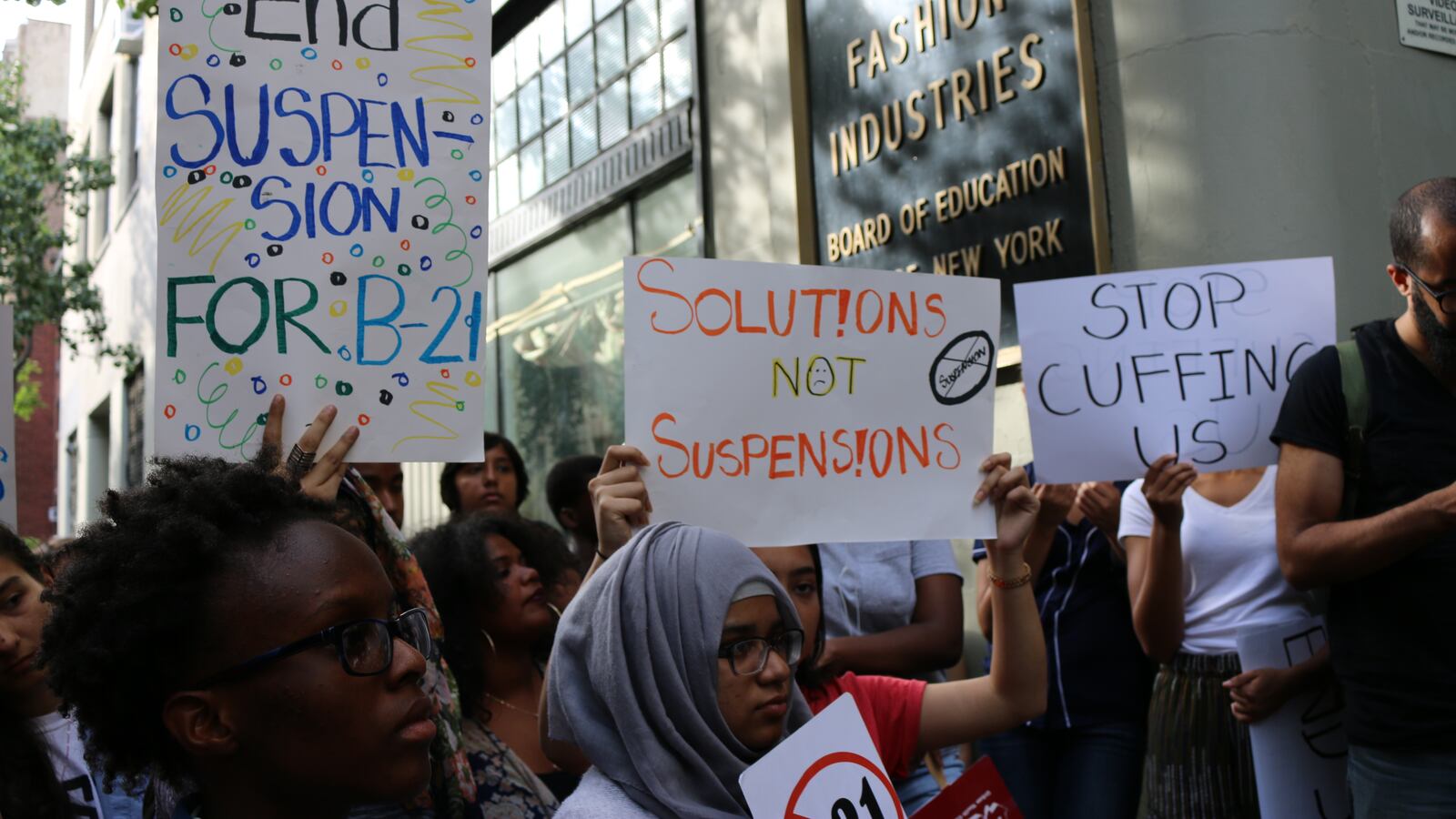Black students don’t just bear the brunt of suspensions in New York City — they also are more likely to receive harsher punishments for committing the same infractions as students from other racial groups, according to an analysis released Thursday by the city’s Independent Budget Office.
The report zeroed in on the top 10 infractions that cause roughly 80 percent of student suspensions and found that black students were more likely to receive harsher punishments for eight of them. In three of those suspension categories — bullying, reckless behavior, and altercation — black students were suspended for roughly double the number of days as students from at least one other racial group.
Black students who were suspended for “reckless behavior,” for instance, were suspended for 16.7 days on average. For Asian students, it was just 7.3 days, and for whites 10.9 days. The IBO report found that black students were not overrepresented in just two of the top 10 suspension categories: insubordination and drug possession.
Those findings, based on data from the 2016-17 school year, come against the backdrop of discipline reforms under Mayor Bill de Blasio that contributed to a substantial reduction in the number of overall suspensions, including in subjective categories such as “insubordination.” However, overall suspensions still disproportionately affect black students and students with disabilities.
The IBO report does not include any analysis of whether the harsher punishments are the result of discrimination, differences in student behavior or the interplay of these or other factors, even within the same suspension categories.
There is research that some — though not all — of the disparities in school discipline are the result of bias from teachers and administrators. A study in Louisiana found that black students receive slightly harsher punishments than white students do while looking at the same altercation; other research has shown that black students are more likely to be suspended for discretionary offenses (think insubordination).
Black teachers are also less likely to suspend black students than white teachers. (In New York City, although 83 percent of students are Asian, black or Hispanic, less than 40 percent of their teachers are, according to data from the 2015-16 school year.)
“We’ve invested $47 million in school-based resources and support that have helped lead to a 34 percent decrease in suspensions, and we continue to expand restorative practices that address the underlying causes of conflict, reinforce positive behaviors, and hold students accountable for their actions while keeping them in a learning environment,” education department spokeswoman Miranda Barbot said in a statement.
“We recognize there is more work to do to address these national disparities at a local level and continue to remain focused on improving school climate,” she added.
You can read the full IBO report here.

